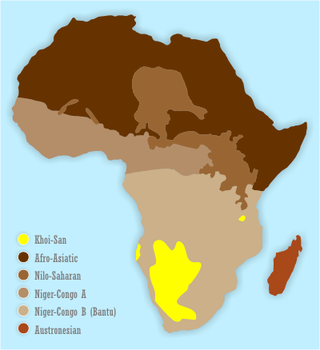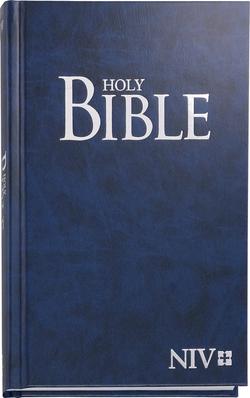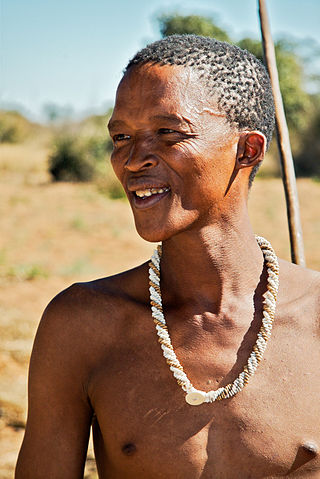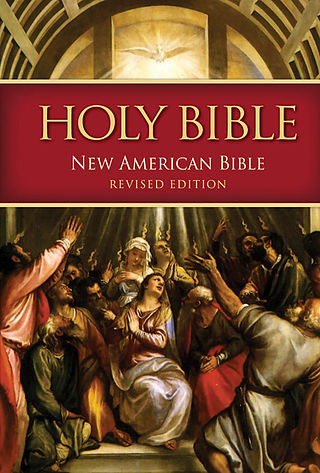This article has multiple issues. Please help improve it or discuss these issues on the talk page . (Learn how and when to remove these messages)
|
The Naro Bible is a translation of the Bible (Bible translations) into the Naro language.
This article has multiple issues. Please help improve it or discuss these issues on the talk page . (Learn how and when to remove these messages)
|
The Naro Bible is a translation of the Bible (Bible translations) into the Naro language.
Naro /ˈnɑːroʊ/ is a Khoe language spoken in the Ghanzi District of Botswana and in eastern Namibia. There are about 14,000 speakers: 10,000 in Botswana (2004 Cook) and 4,000 in Namibia (1998 Maho), making it one of the most widely spoken of the Tshu–Khwe languages. Naro is a trade language among speakers of different Khoe languages in the Ghanzi District. There is currently a dictionary.
This section contains a press release .(June 2022) |
"For the first time the Bible makes sense, and it feels as if God is talking to me," said one of the girls who helped the Summer Institute of Linguistics (SIL) translator write the Bible during the long translation process. But now she was hearing it for the first time on an Audibible.™ Mr. Hessel Visser led the SIL translation team to study the culture and Naro language in North West Botswana for the Khoi-San (Bushmen) of Botswana, Namibia and South Africa. He spent the last 21 years developing a written language for the 12,000 people speaking this very old language. When the language was completed, just 15 years ago, he started the task of translating the Bible into the newly written language, but very few of the Khoi-San could read it. Additionally, Hessel learned that he had terminal cancer. His prayer, along with many others, was that God would use the fruit of his "life's work" and quickly provide funding to record the Naro Bible in the newly written language for this ancient oral people group. His prayer was answered. "Funding partners" were brought together with the "translation partners" and the Davar audio recording team took the studio to the "bush." It recently produced an audio New Testament in the Naro language, and now the "Bushmen" can hear the Word of God in their own language for the first time. Translation of the Old Testament is almost finished, and will then be recorded for Audio as well. [1]
Naro "readers" were used in the translation, as well as "proofing listeners" and technicians. The leader of the recording team noticed that one local member seemed to distance himself from the others. But the more he served as a "proofing listener" the more he wanted to engage in the newly recorded Word of God. He was even volunteering to work overtime and long long hours in order to get the job done. "It was contagious," said the Recording Director. Soon the whole community was involved and couldn't wait for the finished audio Bible.
GRN is a non profit organization, and does not pay for translators or language helpers. All assistance is given voluntarily. GRN also has opportunities for Christians to contribute to evangelizing unreached people groups through audio Bible stories, Bible lessons, Bible study tools, evangelistic messages, songs and music.
The roots of the Naro Language Project lie in the efforts of the congregation of the Reformed Church in D'Kar in the 1980s to try and write their very own language. People like Aron Johannes and Dcatshau Qhomatcã spent many hours writing songs and other materials in an orthography chosen by them. Because there was felt to be a need to have a Bible translation in their language, the help of an organisation from overseas was requested. In 1991 Hessel and Coby Visser came from the Netherlands, supported by the Mission of the Christian Reformed Churches in the Netherlands. [2]
The work of the Naro Language project, affiliated to D'kar Trust, can be divided into three major sections:
The translation of the New Testament into Naro has been launched as a big development to the Naro community and its language. Officially launching the Naro language New Testament in Dkar on Saturday, Minister of Infrastructure, Science and Technology Mr Johnnie Swartz said the Bible has always been a source of comfort and inspiration for many, therefore crucial to have it written in one's own language. Swartz urged the Naro-speaking community to embrace the gesture and use the Bible as well as the dictionary for better understanding of the word of God to change their lives. He said he is aware that the project of that magnitude could not have been without challenges, adding that the most obvious one is the transition that the San are making from their traditional lifestyle of hunting and gathering to a more modern lifestyle resulting in striking poverty. The secretary general of the Bible Society of Botswana, Reverend Gabriel Tsuaneng said the translation of the New Testament is to hearten the Naro people by having God's word in their language.
Rev. Tsuaneng said the project will assist other agencies in developing Naro materials aimed at increasing literacy among Naro people. The Naro language project started in 1991 at the initiation of the Reformed Church in Dkar with the help of Dutch Churches in the Netherlands. The project also produced a Naro dictionary. [3]

The Khoisan languages are a number of African languages once classified together, originally by Joseph Greenberg. Khoisan is defined as those languages that have click consonants and do not belong to other African language families. For much of the 20th century, they were thought to be genealogically related to each other, but this is no longer accepted. They are now held to comprise three distinct language families and two language isolates.

The New International Version (NIV) is a translation of the Bible into contemporary English. Published by Biblica, the complete NIV was released on October 27, 1978 with a minor revision in 1984 and a major revision in 2011. The NIV relies on recently-published critical editions of the original Hebrew, Aramaic, and Greek texts.

The New World Translation of the Holy Scriptures is a translation of the Bible published by the Watch Tower Bible and Tract Society; it is used and distributed by Jehovah's Witnesses. The New Testament portion was released first, in 1950, as the New World Translation of the Christian Greek Scriptures, with the complete New World Translation of the Bible released in 1961.

Khoisan or Khoe-Sān is a catch-all term for the indigenous peoples of Southern Africa who traditionally speak non-Bantu languages, combining the Khoekhoen and the Sān peoples. Khoisan populations traditionally speak click languages and are considered to be the historical communities throughout Southern Africa, remaining predominant until European colonisation in areas climatically unfavorable to Bantu (sorghum-based) agriculture, such as the Cape region, through to Namibia, where Khoekhoe populations of Nama and Damara people are prevalent groups, and Botswana. Considerable mingling with Bantu-speaking groups is evidenced by prevalence of click phonemes in many Southern African Bantu languages, especially Xhosa.

Khoekhoe are the traditionally nomadic pastoralist indigenous population of South Africa. They are often grouped with the hunter-gatherer San peoples. The accepted term for the two people being Khoisan. The designation "Khoekhoe" is actually a kare or praise address, not an ethnic endonym, but it has been used in the literature as an ethnic term for Khoe-speaking peoples of Southern Africa, particularly pastoralist groups, such as the Griqua, Gona, Nama, Khoemana and Damara nations. The Khoekhoe were once known as Hottentots, a term now considered offensive.

The San peoples, or Bushmen, are the members of any of the indigenous hunter-gatherer cultures of southern Africa, and the oldest surviving cultures of the region. They are thought to have diverged from other humans 100,000 to 200,000 years ago. Their recent ancestral territories span Botswana, Namibia, Angola, Zambia, Zimbabwe, Lesotho, and South Africa.

The God's Word Translation (GW) is an English translation of the Bible. God's Word to the Nations Mission Society managed and funded the translation.
Wycliffe Bible Translators USA is an interdenominational nonprofit organization with a goal "for people from every language to understand the Bible and be transformed."
Naro, also Nharo, is a Khoe language spoken in Ghanzi District of Botswana and in eastern Namibia. It is one of the most-spoken of the Tshu–Khwe languages. Naro is a trade language among speakers of different Khoe languages in Ghanzi District. There exists a dictionary.

KhweKWAY is a dialect continuum of the Khoe branch of the Khoe-Kwadi family of Namibia, Angola, Botswana, South Africa, and parts of Zambia, with some 8,000 speakers.
The Holy Bible from Ancient Eastern Manuscripts was published by George M. Lamsa in 1933. It was derived, both Old and New Testaments, from the Syriac Peshitta, the Bible used by the Assyrian Church of the East and other Syriac Christian traditions.

Badimo is the name for the traditional African practice of ancestor veneration for the Sotho-Tswana people of Botswana, Lesotho and South Africa. Although most Sotho-Tswana people are Christians, in reality a great majority of them follow at least some of the traditions deemed Badimo even if they are strong followers of another religion as well.

Ghanzi is a town in the middle of the Kalahari Desert the western part of the Republic of Botswana in southern Africa. The region is the country's pride in contributing a large portion towards the beef industry. In fact, Ghanzi farmers provide about 75% percent of beef exports, according to the Botswana Meat Commission, primarily to the United Kingdom and the European Union.
The Khoe languages are the largest of the non-Bantu language families indigenous to Southern Africa. They were once considered to be a branch of a Khoisan language family, and were known as Central Khoisan in that scenario. Though Khoisan is now rejected as a family, the name is retained as a term of convenience.

Joy F. Ridderhof was an American missionary.

The Tyndale Bible (TYN) generally refers to the body of biblical translations by William Tyndale into Early Modern English, made c. 1522–1535. Tyndale's biblical text is credited with being the first Anglophone Biblical translation to work directly from Greek and, for the Pentateuch, Hebrew texts, although it relied heavily upon the Latin Vulgate and German Bibles. Furthermore, it was the first English biblical translation that was mass-produced as a result of new advances in the art of printing.
New Xade is a village located in the central part of the Ghanzi District of Botswana. The population was 1,690 in 2021 census.

The New American Bible Revised Edition (NABRE) is an English-language Catholic translation of the Bible, the first major update in 20 years to the New American Bible (NAB), which was translated by members of the Catholic Biblical Association and originally published in 1970. Released on March 9, 2011, the NABRE consists of the 1986 revision of the NAB New Testament with a fully revised Old Testament approved by the United States Conference of Catholic Bishops in 2010.
The Bible, or portions of it, have been translated into over 1,000 languages of Africa.